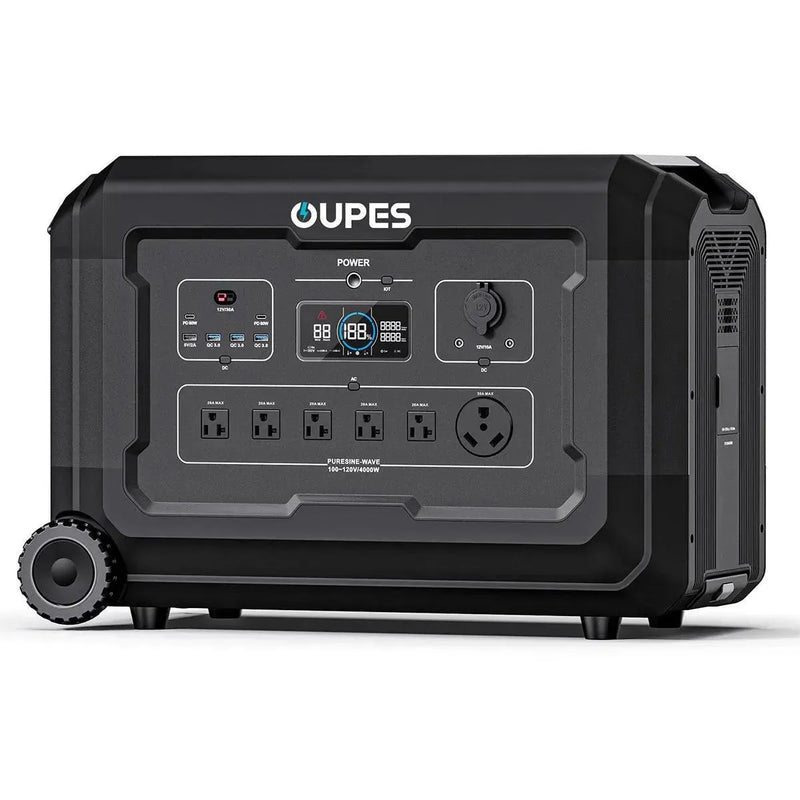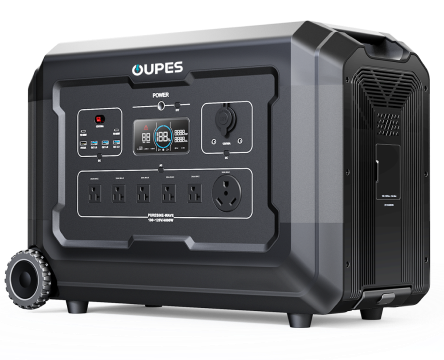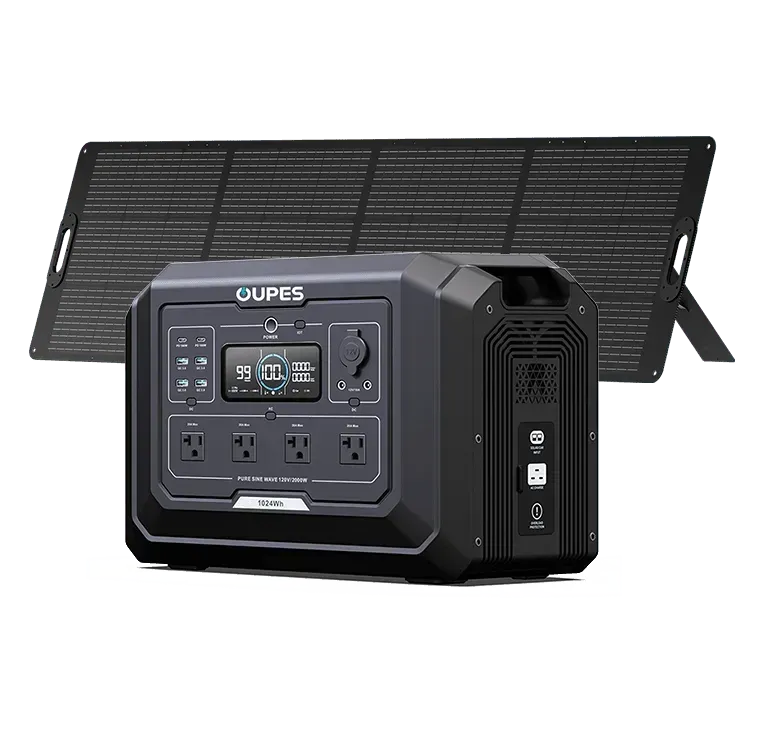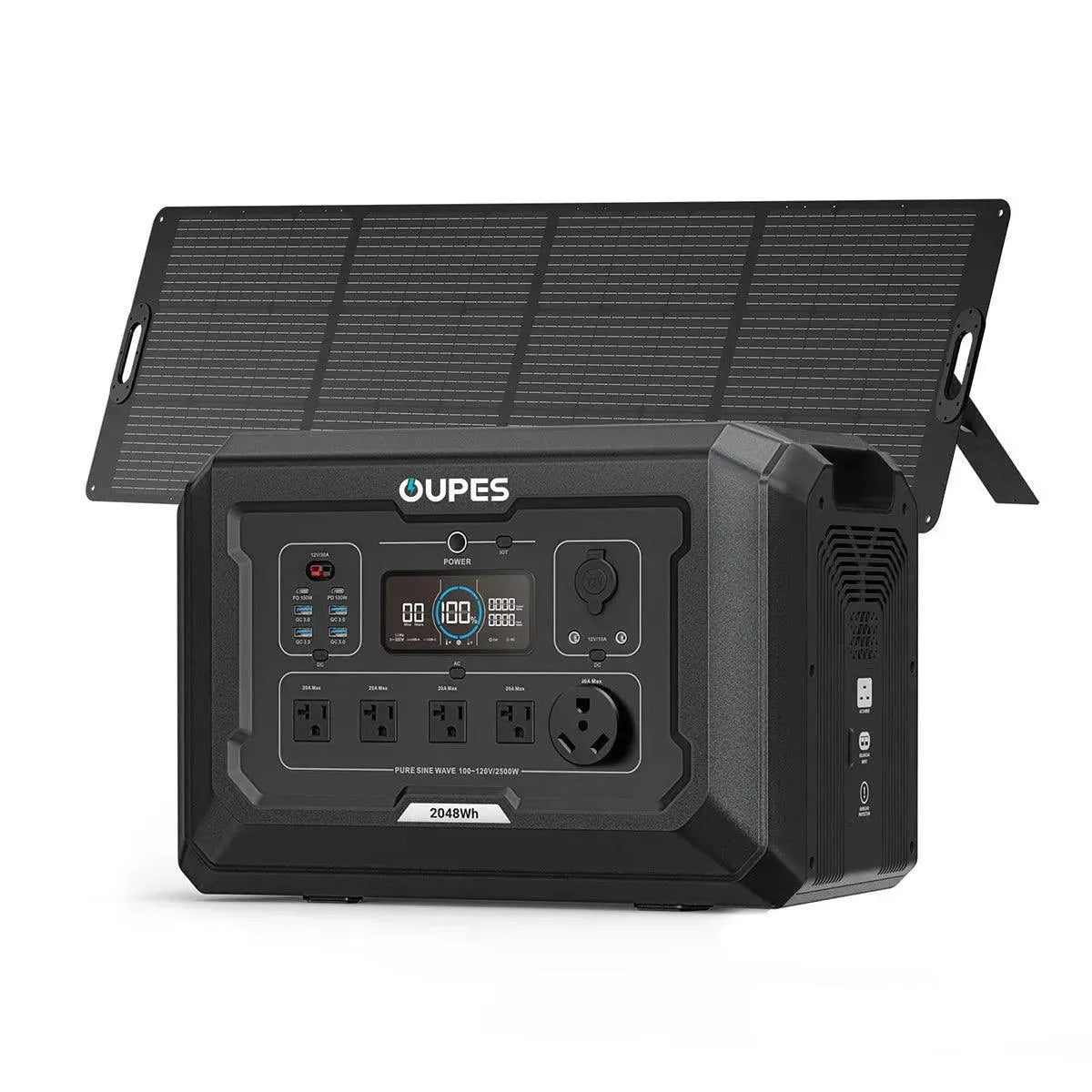
In a world where power outages, outdoor adventures, and remote work are becoming more common, having a reliable source of electricity is more important than ever. Portable power stations offer a convenient and eco-friendly way to keep your devices charged and your essentials running—whether you're at home, on the road, or off the grid. But with so many options on the market, how do you choose the right one?
This guide will walk you through the key features and considerations to help you confidently select a portable power station that fits your specific needs. Whether you're powering a smartphone, mini fridge, or even medical equipment, we’ll break down what really matters when it comes to capacity, functionality, and performance.
Understand Your Power Needs
Before choosing a portable power station, it's crucial to identify what you need it to power. This step will determine the capacity and output requirements of the power station you should buy. Start by listing the devices you plan to use, along with their power ratings in watts. Common devices include smartphones (5-10W), laptops (30-60W), mini fridges (50-100W), CPAP machines (30-60W), and LED lights (5-15W).
After listing your devices, calculate their total power draw. If you plan to use multiple devices at once, sum up their wattage to get the combined power requirement. For example, if your total wattage is 150W and you want to run everything for 5 hours, you’ll need a power station with at least 750Wh (150W × 5h).
Don't forget to consider the starting wattage of certain appliances. Devices with motors, like portable fans or mini fridges, often require a surge of power to start. Make sure your power station’s inverter can handle this peak load to prevent overloads or shutdowns.
Also, think about how long you need backup power. Is it just for a few hours during a blackout, or do you want enough capacity for multi-day camping trips? Longer runtimes require higher-capacity units. This step ensures you don't overspend on unnecessary capacity or underprepare for your needs.
Compare Battery Capacity and Output
Battery capacity is one of the most important specs to consider when choosing a portable power station. It’s typically measured in watt-hours (Wh), which tells you how much energy the battery can store. A higher Wh means the power station can run your devices for longer. For example, a 500Wh station can power a 50W light for about 10 hours, assuming optimal efficiency.
However, battery capacity is only half the story. You also need to look at the power output—how much wattage the station can deliver at once. This is especially important if you plan to run high-power appliances like electric kettles, power tools, or even portable air conditioners. Check the inverter’s continuous and peak power ratings to make sure they match your devices’ requirements.
Many power stations now offer multiple output ports: AC outlets for household electronics, DC ports for car accessories, USB-A and USB-C ports for phones and tablets, and sometimes even wireless charging pads. Make sure the station you choose has enough ports and the right types for your gear. For instance, a USB-C PD port can charge a laptop much faster than standard USB-A.
Lastly, consider the inverter type. Pure sine wave inverters are preferred because they deliver clean, stable power similar to what you get from a wall outlet. This is essential for sensitive electronics like medical devices, audio equipment, and newer laptops. Modified sine wave inverters are cheaper but may cause interference or even damage certain devices.
Evaluate Portability and Design
Portability is one of the defining features of a good power station. Depending on your use case—whether it's home backup, camping, tailgating, or off-grid work—the size and weight of the unit can make a big difference. Smaller models (200–500Wh) typically weigh 5–15 pounds and are easy to carry in one hand. Larger stations (1000Wh+) may weigh 25–50 pounds or more and might include wheels or handles for easier transport.
Look for ergonomic design features such as sturdy handles, a compact form factor, and reinforced corners. These may seem minor, but they make a big difference when you're hauling the unit from your car to a campsite or storing it in a crowded gear closet.
Some power stations also include built-in LED lights, which are incredibly useful for outdoor use or during power outages. Others have touchscreens or digital displays that show real-time data like battery level, input/output wattage, and estimated remaining runtime. These features enhance usability and help you manage your power more effectively.
If you plan to use your power station in rugged environments, check for durability features such as water resistance, dustproofing, and shock protection. While not all models offer these, some are built for extreme conditions and can handle the wear and tear of adventure travel or jobsite use.
Also consider noise levels. Unlike gas-powered generators, battery power stations are nearly silent, making them ideal for quiet environments like cabins or nighttime use. This is a major advantage if you value peace and quiet, or if local noise regulations prohibit gas generators.
Charging Methods and Recharge Time
One of the most overlooked factors when choosing a power station is how it recharges. Most portable power stations can be charged through multiple methods: wall outlet (AC), solar panel, car outlet (DC), and sometimes USB-C. Understanding the recharge options and timeframes can help you plan for emergencies or off-grid use.
Charging from a wall outlet is the fastest and most convenient method. Depending on the battery size, this can take anywhere from 2 to 10 hours. Higher-end models often support fast charging, which cuts recharge time significantly. Look for models that feature pass-through charging, which allows you to charge the power station while using it to power other devices—a handy feature during extended outages.
Solar charging is a game-changer for those who want true off-grid power. If this is a priority, choose a model with built-in MPPT (Maximum Power Point Tracking) controllers for efficient solar input. Solar charge times vary based on panel size, sunlight availability, and battery capacity. For example, a 100W solar panel may take 8–10 hours to charge a 500Wh station under ideal conditions.
Car charging is a slower method, but it can be useful when you're on the go. Keep in mind that this method often charges at lower wattages (usually 60–120W), so it may take all day to charge a mid-sized power station. It's best used as a supplementary option rather than the primary charging method.
Some premium power stations offer modular or expandable battery systems. This means you can add extra batteries or solar panels to increase capacity and runtime, making your setup scalable as your power needs grow.
Safety Features and Reliability
Safety is paramount when dealing with electricity—especially in emergency or remote scenarios. A high-quality portable power station should include a robust battery management system (BMS) that protects against common risks like overcharging, short circuits, overheating, and overcurrent. These safeguards not only protect the user but also extend the life of the battery.
Look for certifications such as UL, CE, FCC, and RoHS, which indicate that the product has passed standardized safety and environmental tests. Reputable brands typically list these certifications clearly in their product specifications. Don’t be tempted by cheaper models that skip these important safety standards.
Some units also include automatic shutoff functions when the device is not in use or if temperatures get too high. This is particularly useful in environments where you may not be able to monitor the power station constantly.
Reliability also comes down to the type of battery used. Most modern power stations use lithium-ion or lithium iron phosphate (LiFePO4) batteries. While lithium-ion is lighter and more compact, LiFePO4 offers longer lifecycles (often 2000+ charge cycles), better thermal stability, and improved safety—making them ideal for heavy or long-term use.
Finally, pay attention to customer reviews and warranty coverage. A good warranty (preferably 1–2 years or more) indicates that the manufacturer stands behind their product. Read real-world user experiences to spot potential issues with performance, durability, or customer support.
Conclusion
Choosing the right portable power station is about more than just picking the biggest battery or the flashiest design. It’s about understanding your power needs, evaluating key features like capacity, output options, portability, and recharge methods, and ensuring the product meets high safety and reliability standards.
By carefully assessing what devices you need to power and how often you plan to use your station, you can find a unit that perfectly fits your lifestyle—whether it’s for weekend camping trips, home backup, or emergency preparedness. With the right portable power station by your side, you’ll be ready to stay connected and powered up no matter where life takes you.




























